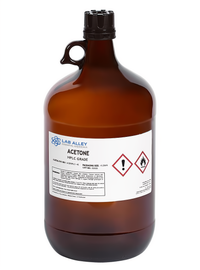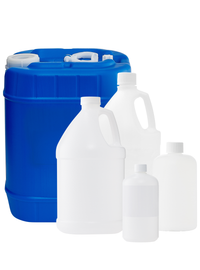Ketones
Ketones
Acetone, Methyl Ethyl Ketone, Cyclohexanone And Butanone
About Ketones
Ketones are organic compounds that contain a carbonyl group (a carbon atom double-bounded with an oxygen atom) with the chemical formula of R2C=O, where R represents an alkyl or aryl group. When the R group is substituted by hydrogen, the compound is an aldehyde. If neither is hydrogen, the compound is a ketone, where the carbonyl group is attached to two carbon groups.

Ketones are naturally produced by the body. When there is not enough insulin to turn glucose into energy, the liver turns fatty acids into ketones which act as fuel for the brain, providing it with the energy that is needed for normal function. Ketones are commercially produced as well, most commonly via oxidation of hydrocarbons.
The solubility of ketones may vary depending on the hydrogen bonding. Ketones with five or fewer carbon atoms tend to be soluble in water. In the case of six, seven, or more carbon atoms, they are of limited solubility in water.
Ketones are highly reactive, and most of their chemical activity results from the nature of the carbonyl group, where the polarity of this group affects their physical properties.
Major uses and applications
Ketones have multiple industry purposes. The most common ketone is acetone which is an excellent solvent for several plastics and synthetic fibers manufacturing. In the household, acetone is used as a nail paint remover and paint thinner. In medicine, it is used in chemical peeling and for acne treatments.
Ketones are also used in industries manufacturing explosives, lacquers, paint, textiles, tanning, preservatives in hydraulic fluids, varnishes, resins, and coatings.
The most common ketones besides acetone are: methyl ethyl ketone, also known as butanone, cyclohexanone, and butanone. Butanone is used in the production of textiles, varnishes, plastics, paint remover, paraffin, and wax. Butanone is also used as a welding agent for plastics due to its dissolving properties and as a cleaning agent. Cyclohexanone is primarily used in the production of nylon and as a solvent in the manufacturing ofadhesives, automotive, cleaning, and furniture care products, electronics, paints, photo chemicals, polyesters, and synthetic resins.
Common Uses and Applications
- Solvent
- Nail polish remover
- Paint thinner
- Chemical peeling
- Acne treatment
- Cleaning agent
- Explosives
- Lacquers
- Paint
- Textiles
- Tanning
- Preservatives in hydraulic fluids
- Varnishes
- Synthetic Resins
- Coatings
- Paraffin and wax
- Welding agent
- Adhesives
- Furniture care product
- Polyester
- Photochemical
Industries
- Chemical
- Cosmetics
- Pharmaceutical
- Skincare
- Paint and Textile
- Automotive
- Plastic
- Nylon
- Furniture
- Electronic












